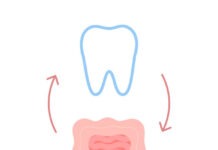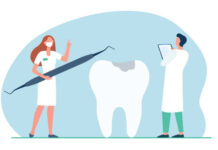VR development services are making a significant impact across various industries, and dentistry is no exception. Virtual Reality (VR) is quickly changing the landscape of dental procedures, providing innovative solutions for both patients and dental professionals. By 2025, the role of VR in dentistry will be even more significant, enhancing patient comfort, improving training methods, and simplifying complex procedures. It’s interesting to note that a large number of people experience dental anxiety, and VR presents a promising way to help manage this issue. This blog post delves into how VR is reshaping dental care in 2025.
Enhancing Patient Comfort and Reducing Anxiety
The Challenge: Dental anxiety is a widespread concern that often discourages people from getting the care they need.
VR’s Approach: With VR headsets, patients can be immersed in soothing virtual environments, which helps distract them from the dental work being done and alleviates their anxiety. Picture having a root canal while enjoying the tranquility of a virtual beach!
Advantages: This results in a more comfortable experience for patients, making dental visits less daunting and promoting the importance of regular checkups.
Enhancing Dental Training and Education
The Challenge: Traditional dental training often faces limitations due to the lack of real-world practice opportunities.
VR’s Solution: Virtual reality simulations provide dental students with realistic scenarios to practice intricate procedures repeatedly, all without putting patients at risk. VR development services are responsible for creating these engaging training environments.
Benefits: This approach speeds up skill acquisition, enhances precision, and equips dentists to handle a broader array of procedures. Additionally, students can encounter rare cases in a controlled and safe setting.
Simulating Complex Procedures
The Need: Certain dental procedures, such as implants or oral surgery, demand careful planning and exactness.
VR’s Solution: Virtual reality enables dentists to construct 3D models of a patient’s mouth, allowing them to visualize and rehearse the procedure prior to execution.
Benefits: This leads to greater accuracy, minimizes the chances of complications, and facilitates tailored treatment plans. Dentists can “rehearse” complex surgeries multiple times in VR before performing the actual operation.
Patient Education and Engagement
The Difficulty: It can be tough to explain complex dental procedures to patients.
VR’s Solution: Virtual reality can provide interactive visualizations of dental problems and treatments, helping patients better grasp their conditions and the suggested solutions.
Benefits: This enables patients to make informed choices about their oral health and boosts their involvement in the treatment process. Patients can visualize the issue and the remedy in a way that’s much clearer than a simple diagram.
Pain Management and Distraction Therapy
The Issue: Effectively managing pain during dental procedures is essential for patient comfort.
VR’s Solution: The distracting nature of VR can also aid in pain management. Immersive experiences can lessen the perception of pain, which may reduce the need for anesthesia in certain situations.
Benefits: This can result in a more comfortable experience for the patient and shorten recovery time.
The Role of VR Development Services
VR development services play a crucial role in this transformation. They are responsible for creating custom VR applications that enable these advancements. These services encompass:
Creating Immersive Training Simulations: VR development services design realistic training scenarios for dental students and practicing dentists.
Developing Patient Education Tools: They craft interactive VR experiences that help patients understand dental procedures in an engaging manner.
Building VR Applications for Procedure Planning: VR development services develop tools that enable dentists to visualize and plan complex procedures in 3D.
The Future of VR in Dentistry
The future of VR in dentistry looks promising. As VR technology continues to advance, we can anticipate even more sophisticated applications. Imagine:
AI-powered VR simulations: Merging VR with AI to produce more realistic and adaptive training scenarios.
Remote teledentistry using VR: Utilizing VR to deliver dental care to patients in remote locations.
VR-guided surgery: Employing VR to assist surgeons during intricate procedures, enhancing precision and accuracy.
Game-Changing Impact of VR Development
VR development services are not merely creating tools; they are actively shaping the future of dental care. These services are enhancing the comfort of dental procedures, improving training and education, and facilitating more precise and personalized treatments.
Conclusion
Virtual reality is set to revolutionize dental care in 2025 and beyond. By increasing patient comfort, enhancing training, and simplifying complex procedures, VR is changing the dental experience for both patients and practitioners. The partnership between dental professionals and VR development services is crucial for unlocking the full potential of this technology, paving the way for a future where dental care is more accessible, effective, and centered around patients. As VR technology continues to evolve, its integration into dentistry will deepen, leading to even more innovative solutions and a brighter future for oral health.
Also Read: How VR Fitness Apps Transform Home Workouts.

























